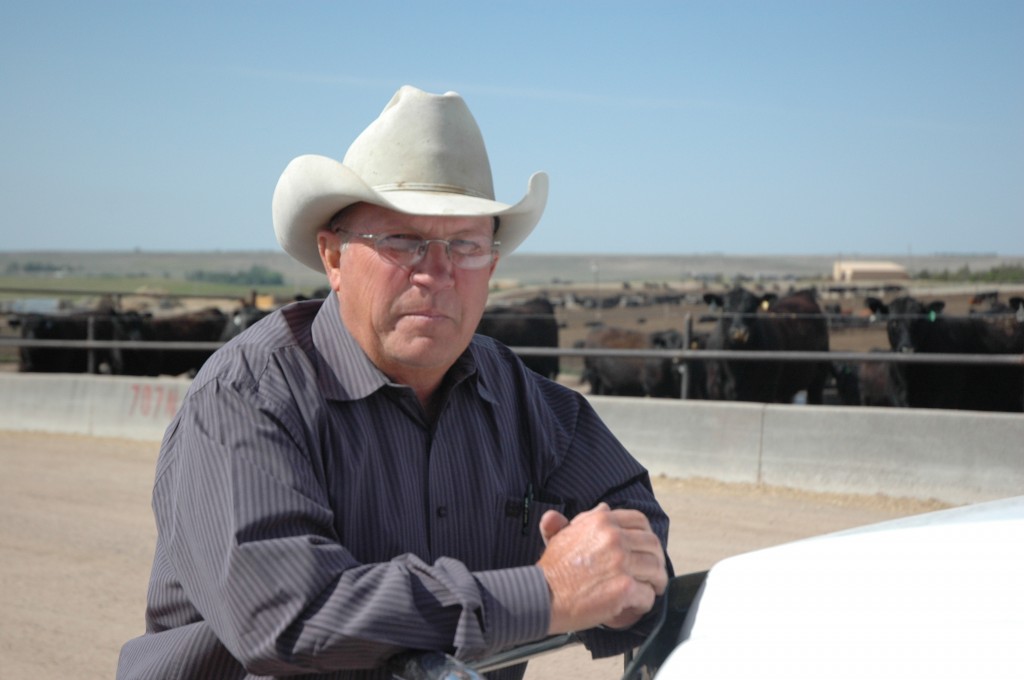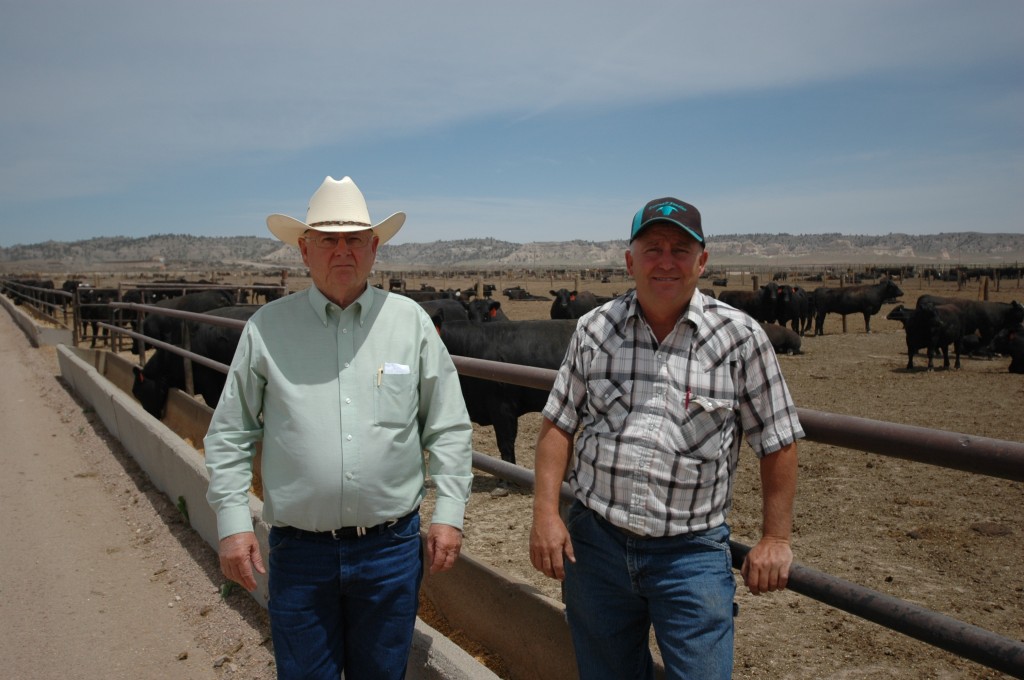
What grumps?
To some, that may seem like an odd comment, but I make it because I wonder why producers with questions about their feeding options don’t just call a feeder.
Not only are they not scary, they’re also generally very willing to help. Now in some circles, feeders are painted as profit-robbing, practically villainous beings just a step above a beef packer. (You may remember I had something to say about that, too.)
But back to the feeders. I visit with quite a few each year, and I’ve never met anything but good, hardworking, down-to-earth folks. My story trip last week built up my body of proof.
Meet the father-son combo of Gary and Lane Darnall. They welcome calls from ranchers at their feedyard in western Nebraska.
In fact, that’s usually how the whole process starts, with a phone call about whether or not it makes sense for them to send their cattle to the feedyard.
“We’ll start working on forecasting and what it looks like. We put together a snapshot of what we think those cattle will make money-wise and how we think they’ll perform based on what we know of those cattle or what the owner has told us of those cattle. That will probably stimulate a couple more phone calls,” Lane said.
And they welcome that, as Gary added, “We want to be honest with that rancher or that retained owner so he feels confident in that decision.”
So there are a couple of feeders who want to talk regularly with ranchers. That sounds the opposite of the curmudgeon some make that segment out to be.
Another person who is more of an antonym to that term would be Tom Williams of Chappell Feedlot.

I visited with Tom and his wife Cindy earlier that day and they echoed that spirit of customer service and total willingness to help. They talked about the way they sort cattle, the experts they work with and the data they return to those who place cattle with them.
But one thing I think any customer could appreciate is the passion he brings to his job.
“It’s easy for me to go talk to ranchers. It’s fun because I like cows and this way I get to work with a whole bunch of cowherds to some extent.”
And a whole bunch of customers, too. He aims to help them add more premiums to their pocketbook, but notes it’s about more than just extra black ink.
“It’s the pride. There isn’t a good cow person out there that isn’t damn proud of their cows.”
And he likes making sure they good reason to be.
May your bottom line be filled with black ink,
Miranda
You may also like
You, Your Cows and Their Feed
Expert guidance from Dusty Abney at Cargill Animal Nutrition shares essential strategies for optimizing cattle nutrition during droughts, leading to healthier herds and increased profitability in challenging conditions.
Marketing Feeder Cattle: Begin with the End in Mind
Understanding what constitutes value takes an understanding of beef quality and yield thresholds that result in premiums and/or discounts. Generally, packers look for cattle that will garner a high quality grade and have excellent red meat yield, but realistically very few do both exceptionally well.
Nebraska Ranch Receives Certified Angus Beef Commercial Award
Troy Anderson, managing a Nebraska ranch, focuses on breeding thriving maternal cows that will grade premium Choice and Prime, while respecting livestock, people and land. Anderson Cattle receives the 2023 CAB Commitment to Excellence Award. Their journey includes improving genetics, feeding home-raised and purchased calves and using data for better breeding decisions, all with a bottom-line approach.




